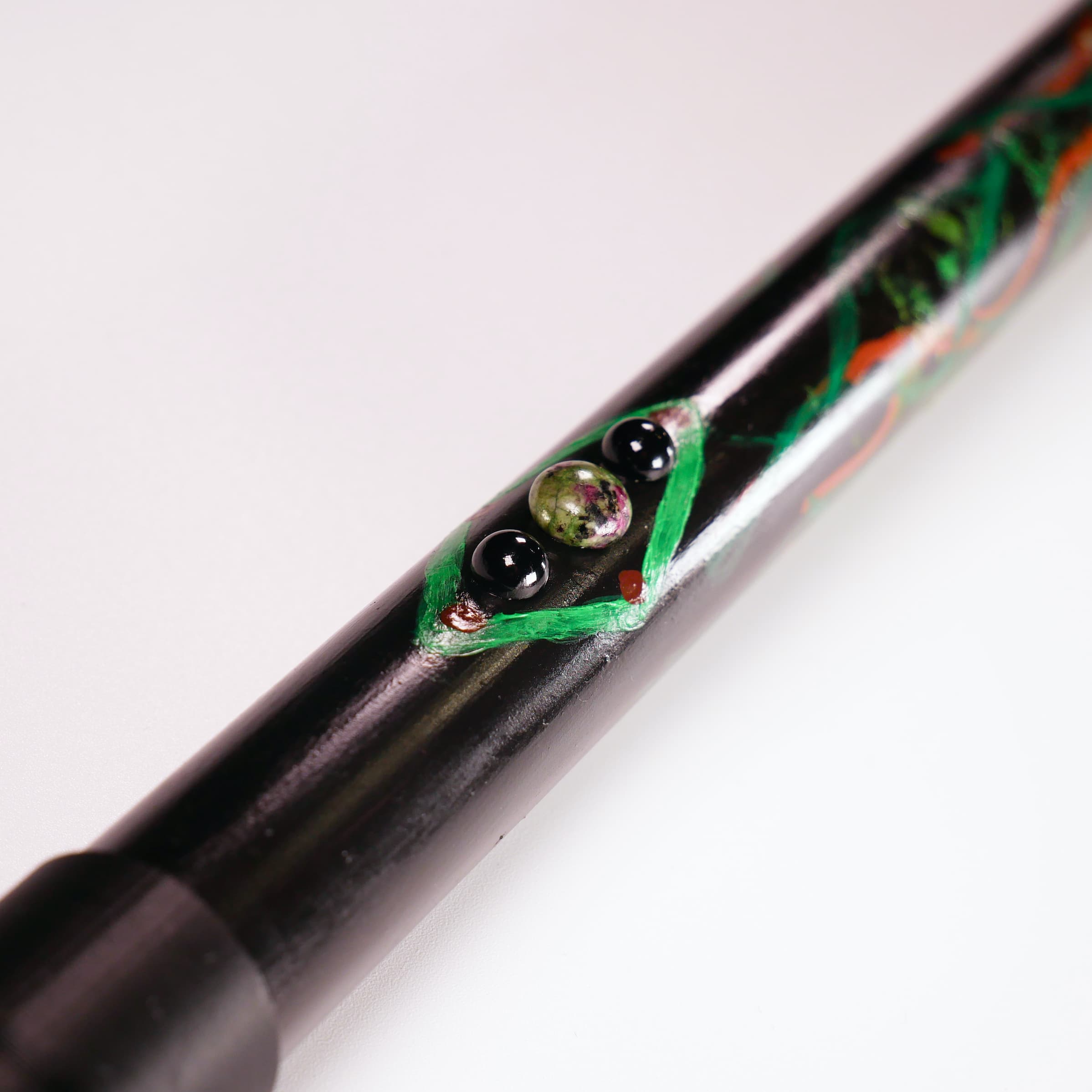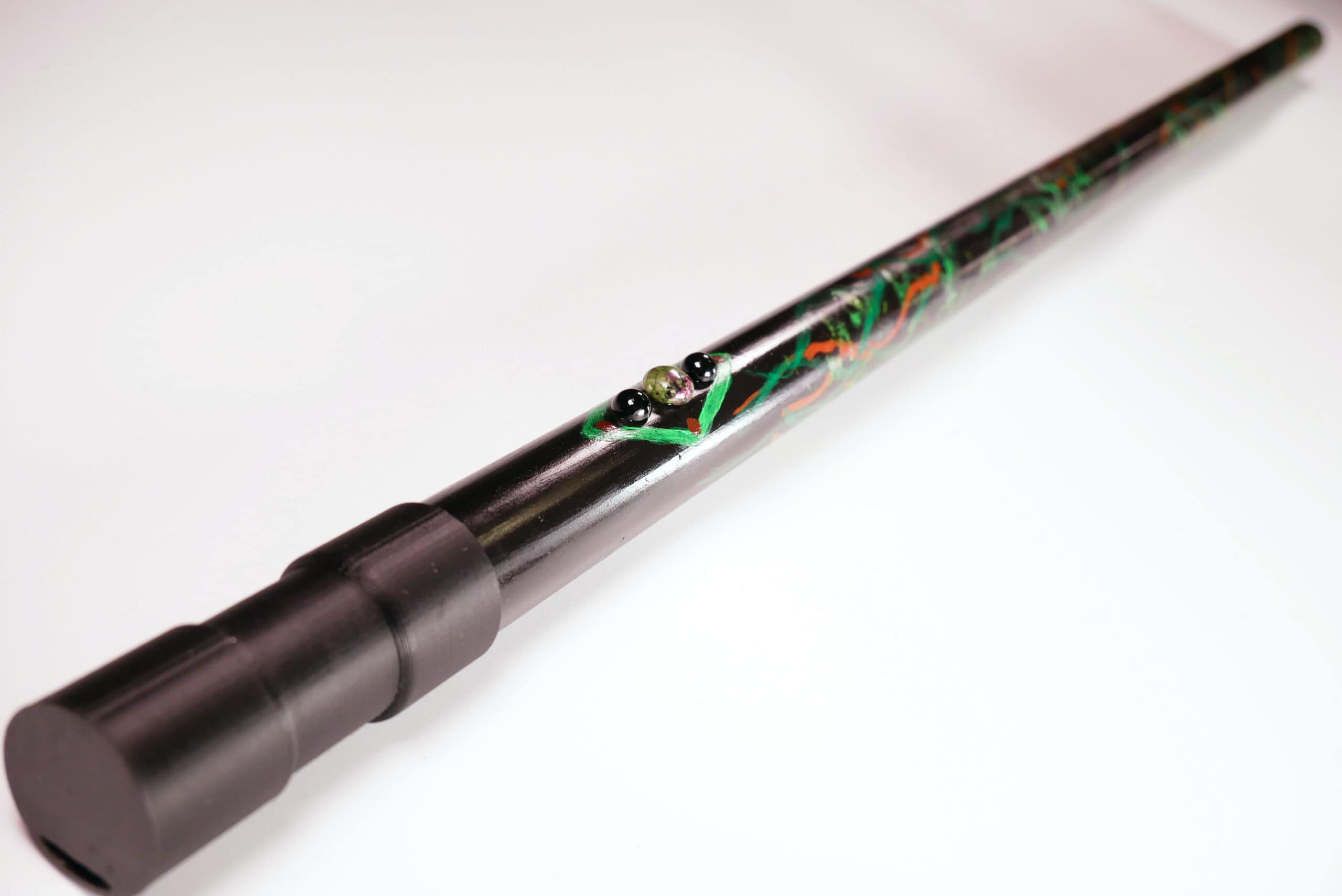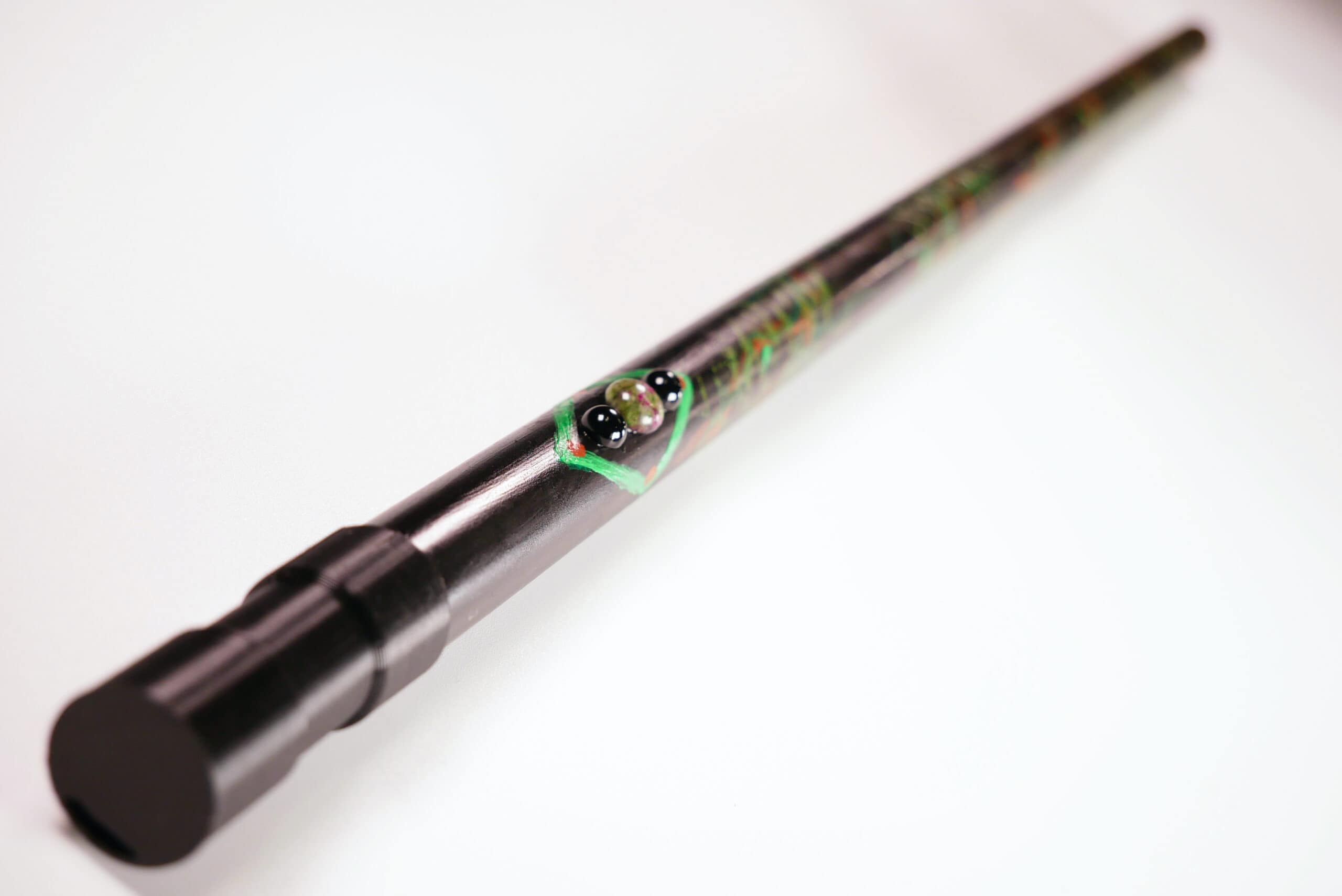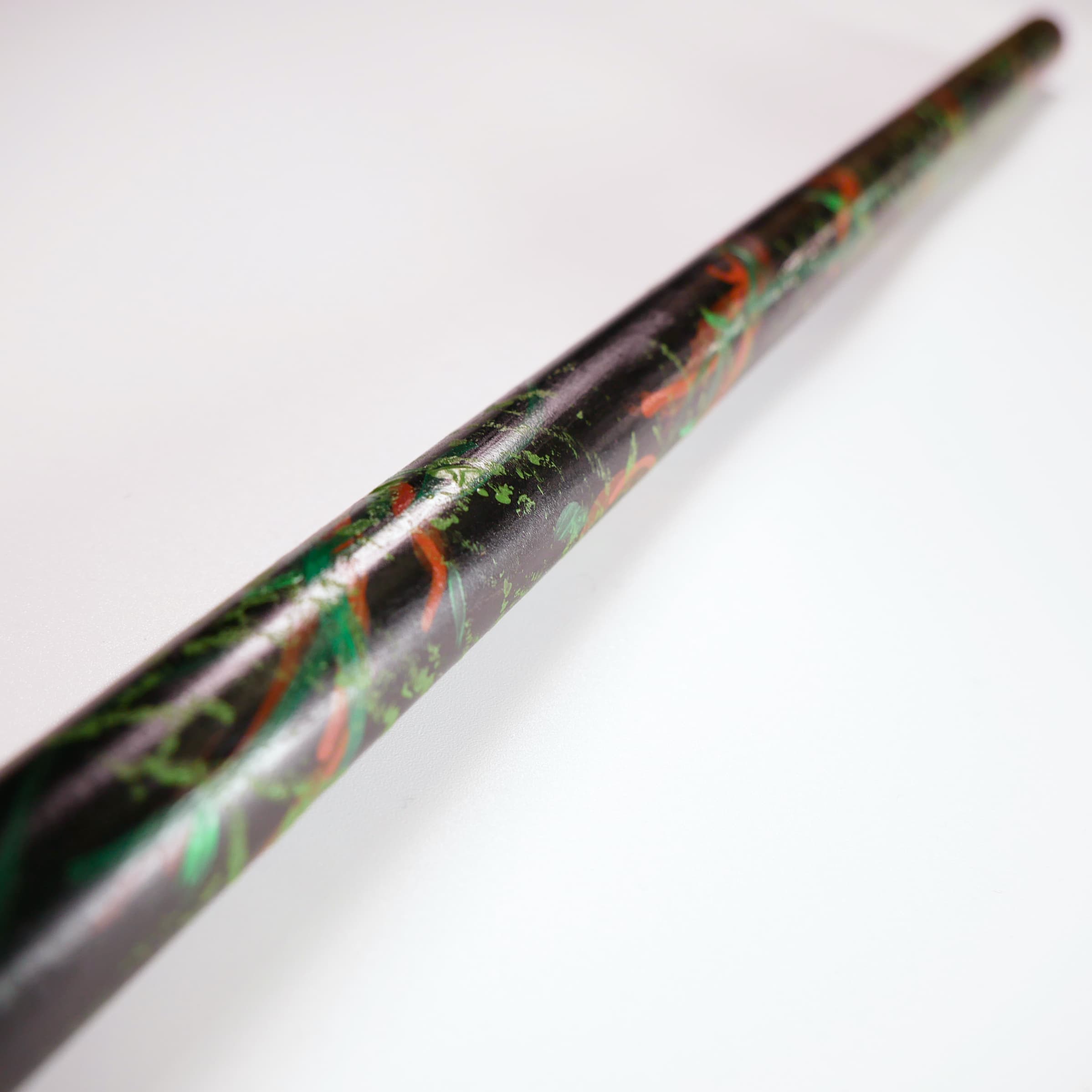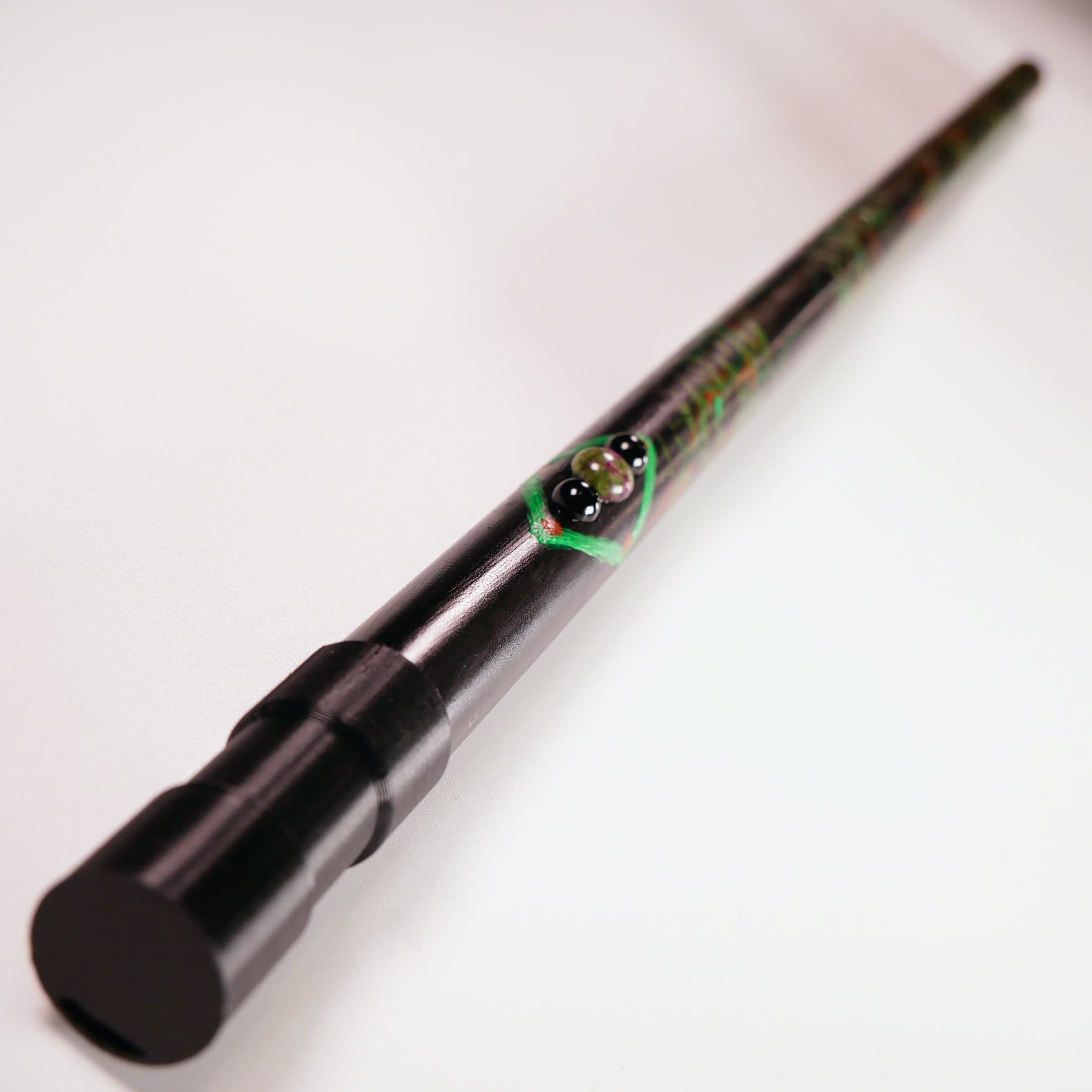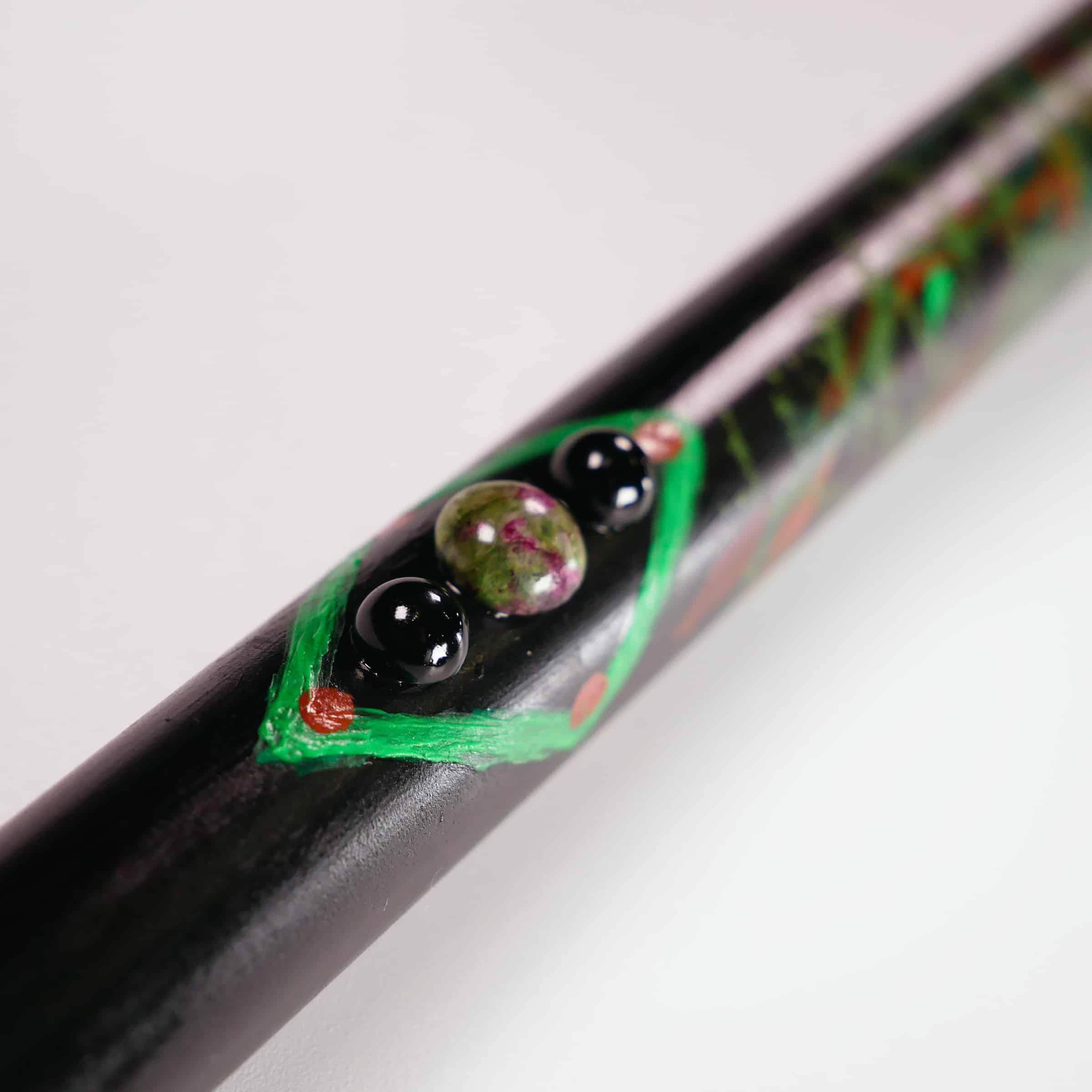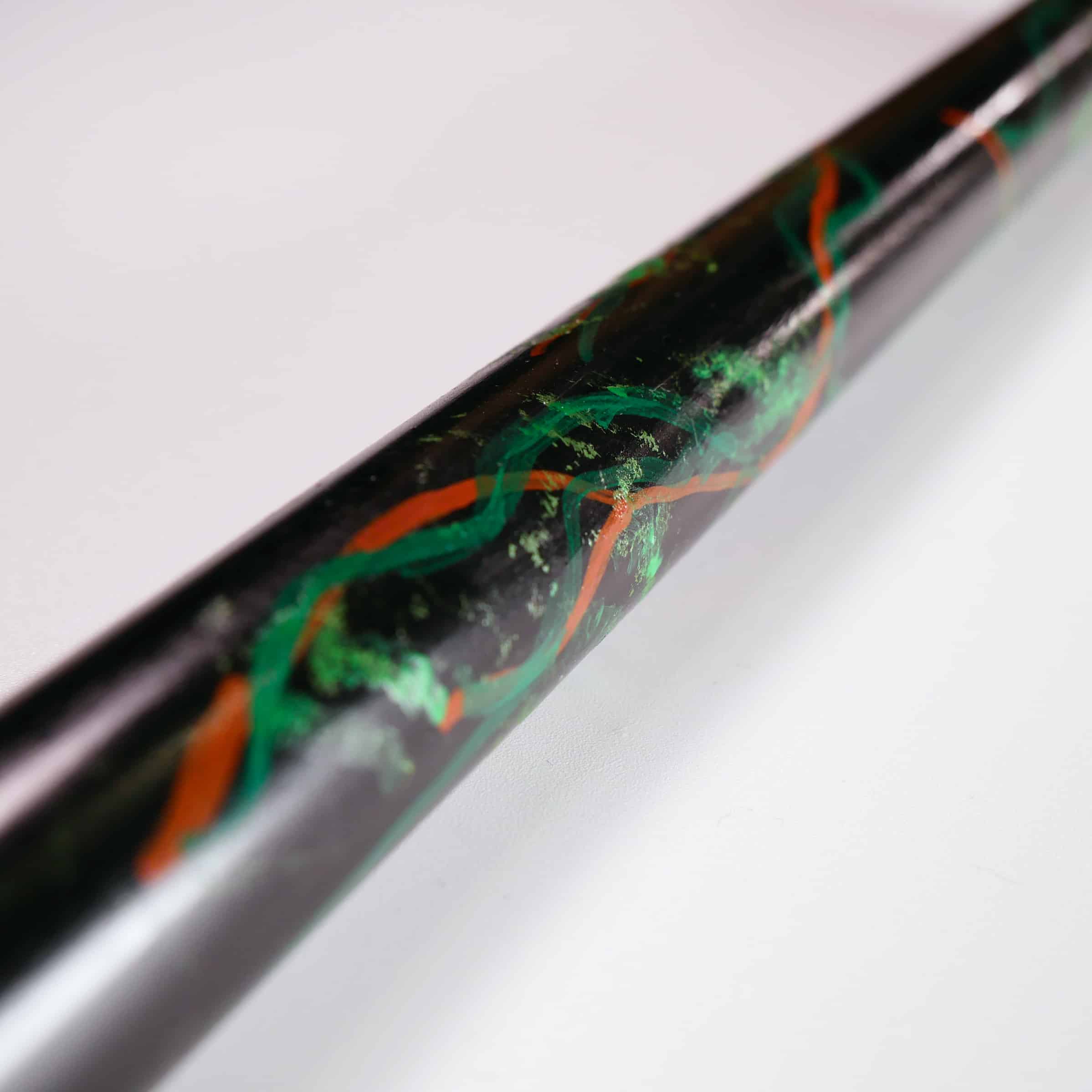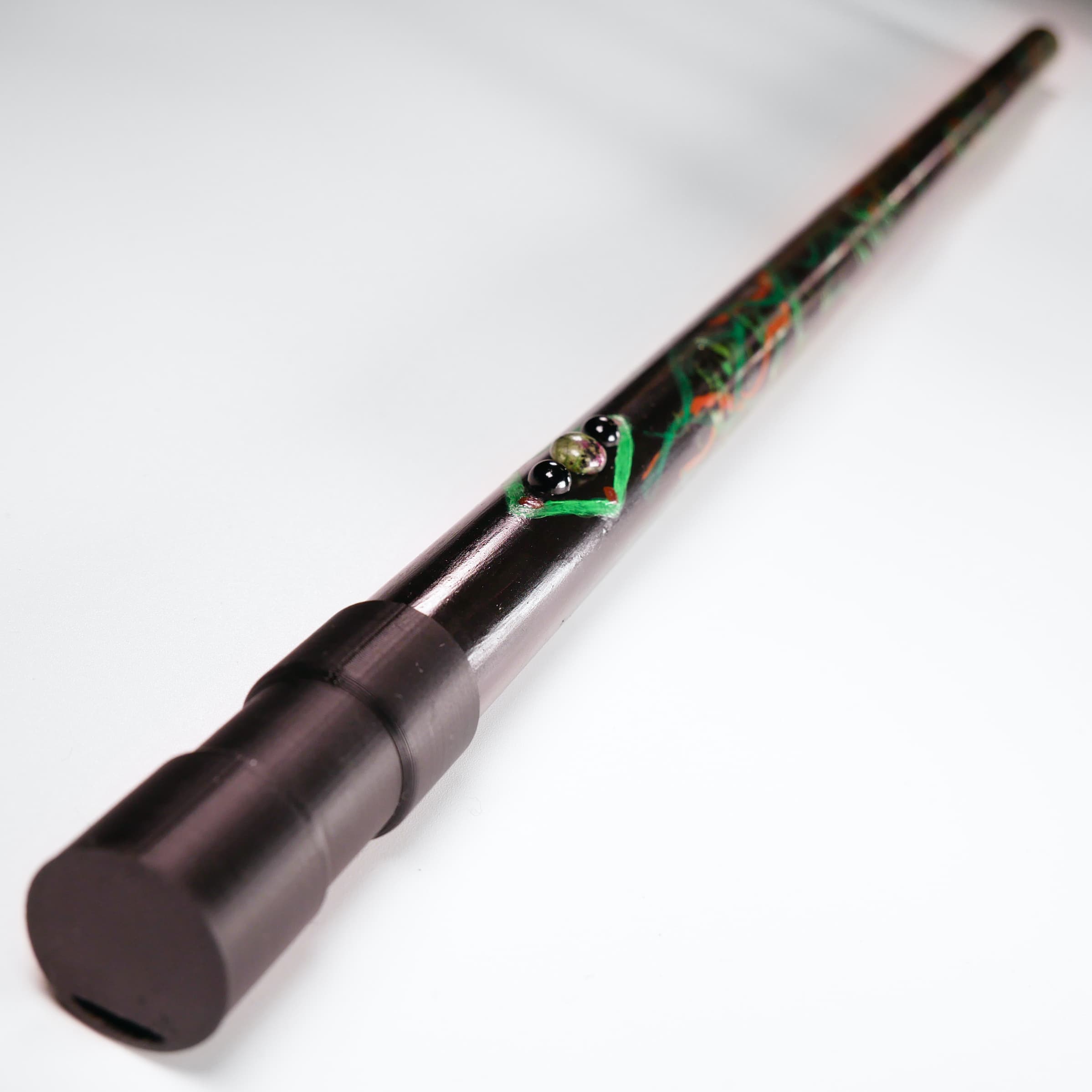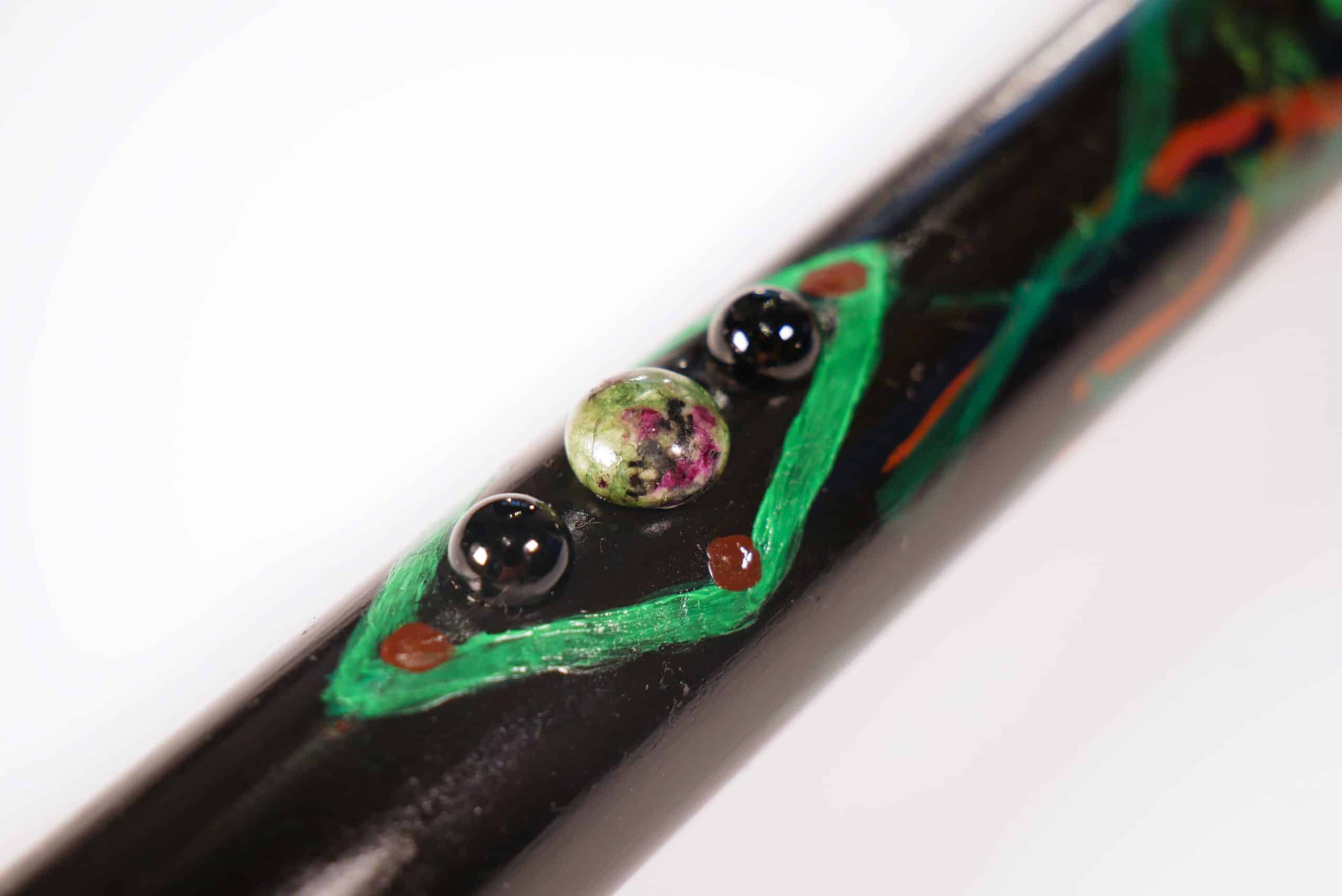Description
Individual sounds are achieved by regulating the breath pressure. This means that by blowing harder we achieve higher sounds, and by loosening the air pressure we bring out lower sounds. We can achieve additional modulation of sounds by covering and uncovering the end of the flute.
It is a common pastoral instrument that when played loudly can be heard even from the next mountain.
Overtone flute is an instrument recommended for everyone. It can be used to meditate, learn to master your own breath, and even to dance. Learning basic articulations allows for a rhythmic play that accompanies the drums well.
The flute is made of two materials. The body is made of PVC and the mouthpiece is made of certified organic PLA – plastic made of corn flour. This makes the instrument both resistant to temperature, damage and non-toxic to health.
The instrument is hand painted and decorated with stones: ruby zoisite + onyx.
Each piece may differ slightly in the appearance of the paintings due to their handmade nature.
Key of C size: 65cm
Key of D size: 57,5cm
Sound samples:
Key of C:
Key of D:
I played such flutes in in my new Single “Freedom”:
You can see and hear more about this flute and how to play it in this video:
Tutorial:
Sound presentation:
How to Play?
The overtone flute is one of the simplest flutes to play, because it is enough to blow air into the mouthpiece to produce the first sounds. Follow these few hints to get you started well with this instrument:
1. Sound scale.
Blow air into a mouthpiece. The sound you hear depends on how hard you blew. The higher the air pressure you blow, the higher the sound you will hear. On the other hand, if you want lower sounds, try to relax your belly and diaphragm and blow air with less force. This way you can move up and down the scale.
2. Change the pitch with your fingers.
Now try to put your finger on the end of the flute to cover the hole (if you are reaching). With this method you can manipulate the sound by opening and covering the hole while blowing air through the mouthpiece. By blowing and covering the end of the flute, you can extend the natural scale to receive more sounds.
3. Add the rhythm.
As you enter the rhythm, you will find the melodies more dynamic and the playing of the flute more enjoyable. To do this, try to pronounce the “T”. As if you want to say „to” while playing but without using your vocal cords, just through your mouth, releasing the air. In this way, you can introduce a new ornamentation into sounds, which can be called staccato.
Another way that has a slightly different effect is to say „K” like „key”. The difference is that when you say „T” your tongue is touching the teeth, but when you say „K” it is hitting the back part of your mouth. Now try to combine the two sounds and say “T-K” like “tick” while playing the flute. You can see your tongue moving forward and backward. Try to do this faster until you get a steady rhythm.
If you like to see how these tips work in practice check out my Youtube video lesson

